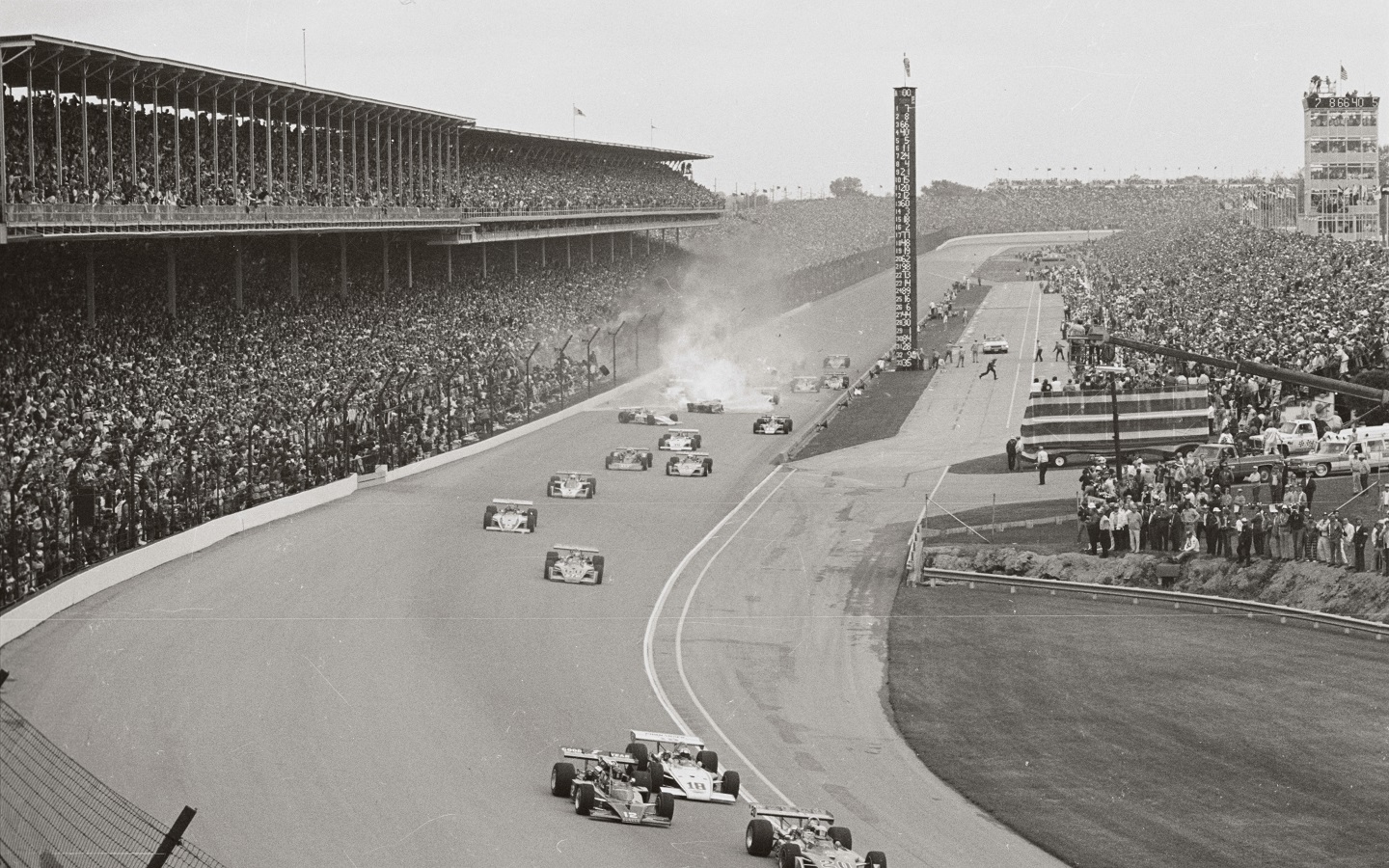Sports
The 1973 Indianapolis 500 Was So Tragic and Depressing It Took 3 Days to Finish

In 2021, persistent rain could not prevent the Daytona 500 from producing exciting action and a historic upset. The same could not be said of America’s other famous 500-mile race in its 57th running. Two days of rain shortened the 1973 Indianapolis 500 to 332.5 miles. Even in that brief distance, the Brickyard still claimed two lives and nearly a third.
May got off to a bad start at the 1973 Indianapolis 500
Going into the 1973 Indianapolis 500, the top story was speed, speed, speed. Recent advancements in automotive technology had opened up the possibility that someone could crack 200 miles per hour at the speedway. By that point, Gordon Johncock had come the closest, setting a top speed of 199.4 during an unofficial test that March.
At pole qualifying on May 12, Johnny Rutherford set the fastest time with a lap of 45.21 seconds at a speed of 199.071 miles per hour. While it didn’t quite break the 200-mile-per-hour barrier, it set a new track record and placed him firmly on the pole.
But with the raw speed came new danger, and one driver paid the ultimate price. During this same qualifying session, Art Pollard hit the outside wall, sending his car out of control. The wreckage of his car caught fire when it came to rest, killing the 46-year-old driver. His would not be the last fatality at Indianapolis that month.
Salt Walther escapes death at Indianapolis
Under threatening skies, the 33 drivers took the green flag for the 57th Indianapolis 500 on Memorial Day Monday. Almost the second that polesitter Rutherford crossed the start/finish line, disaster struck. A multi-car collision sent Salt Walther’s car flying into the outside catch fence, where it virtually disintegrated.
Thirteen spectators suffered injuries from the burning fuel that sprayed from Walther’s car into the grandstands. Walther suffered severe burns but miraculously survived the accident. He was one of the lucky ones.
The crash forced a red flag. As workers scoured to clear debris from the track, the skies opened up, forcing the postponement of the race to Tuesday afternoon. The next day, as the field (sans Walther) was still taking its formation lap, rain once again fell on the speedway, forcing yet another postponement.
By Wednesday, crowds dipped from 200,000 to around 25,000, and the weather over Indianapolis looked no better than the previous two days. It was as if the racing gods had sent warning after warning, telling everyone to call the race off. Still, the 500 finally went green on Wednesday morning.
The Brickyard claims two more victims
It took only 58 laps for disaster to strike. Swede Savage, then in second place, lost control of his car and veered toward the inside wall in turn four. With a full load of fuel, the car exploded in a large fireball. Once again, the red flag waved. It was the third gruesome accident at Indianapolis that month, and minutes later would come the fourth.
Emergency crews rushed toward the flaming wreck of Savage’s car. Armando Teran — working on Graham McRae’s crew — stepped out of his team’s box to cross pit road. Just then, a fire truck struck Teran while traveling 60 miles per hour, according to USA Today. Teran suffered a cracked skull and several broken ribs and was pronounced dead an hour later.
The race resumed an hour and a half later but would not go the full distance. At lap 129, a light rain fell on the speedway. By then, only 10 cars remained, and Gordon Johncock had lapped all but one. After 133 laps, the most dismal Indianapolis 500 in history was mercifully called.
Swede Savage survived the initial impact but would die 33 days after the race due to complications. The final toll for the month: 13 spectators injured, one driver seriously injured, two drivers dead, and one pit worker dead. After the race, ABC’s Chris Economaki called it “a hard-luck year for the Indianapolis 500.” He wasn’t kidding.











